AMD A8-3850 : An HTPC Perspective
by Ganesh T S on June 30, 2011 6:20 AM ESTThe AMD 6550D is able to detect all the cadence patterns in the HQV benchmark Blu-ray. Moving beyond HQV, we have a more sterenuous clip from the Spears and Munsil High Definition Benchmark Test Disc (hereon referred to as the S&M). In this section, we first present screenshots from putting the 2-3-2-3 cadence detection / deinterlacing 'Wedge' test clip.
It was fascinating to put this clip through the paces. When starting out playback with MPC-HC, the framesteps followed the 2-3 cadence pattern indicating that the GPU had locked onto the cadence. However, as the wedge starts its descent, the lock gets lost only to be regained on the way back. This repeats for two revolutions, but the third time onwards, the lock gets permanently lost. Contrast this with the GT 430's behavior which retains the locked cadence all through, and the 6570 which loses it only momentarily around the same timestamp, but regains it later.
You can roll the mouse over the images below to get views of segments of the full size lossless version. This will make it easier to observe the Moire pattern and how the deinterlacing fails once the cadence lock is lost.
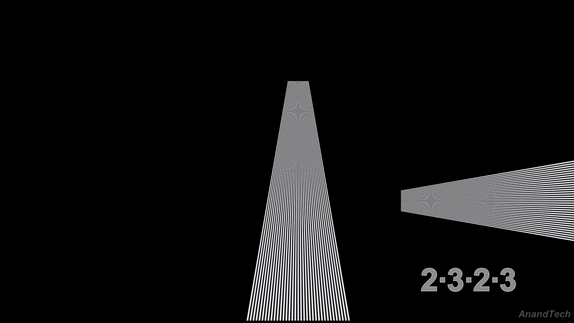
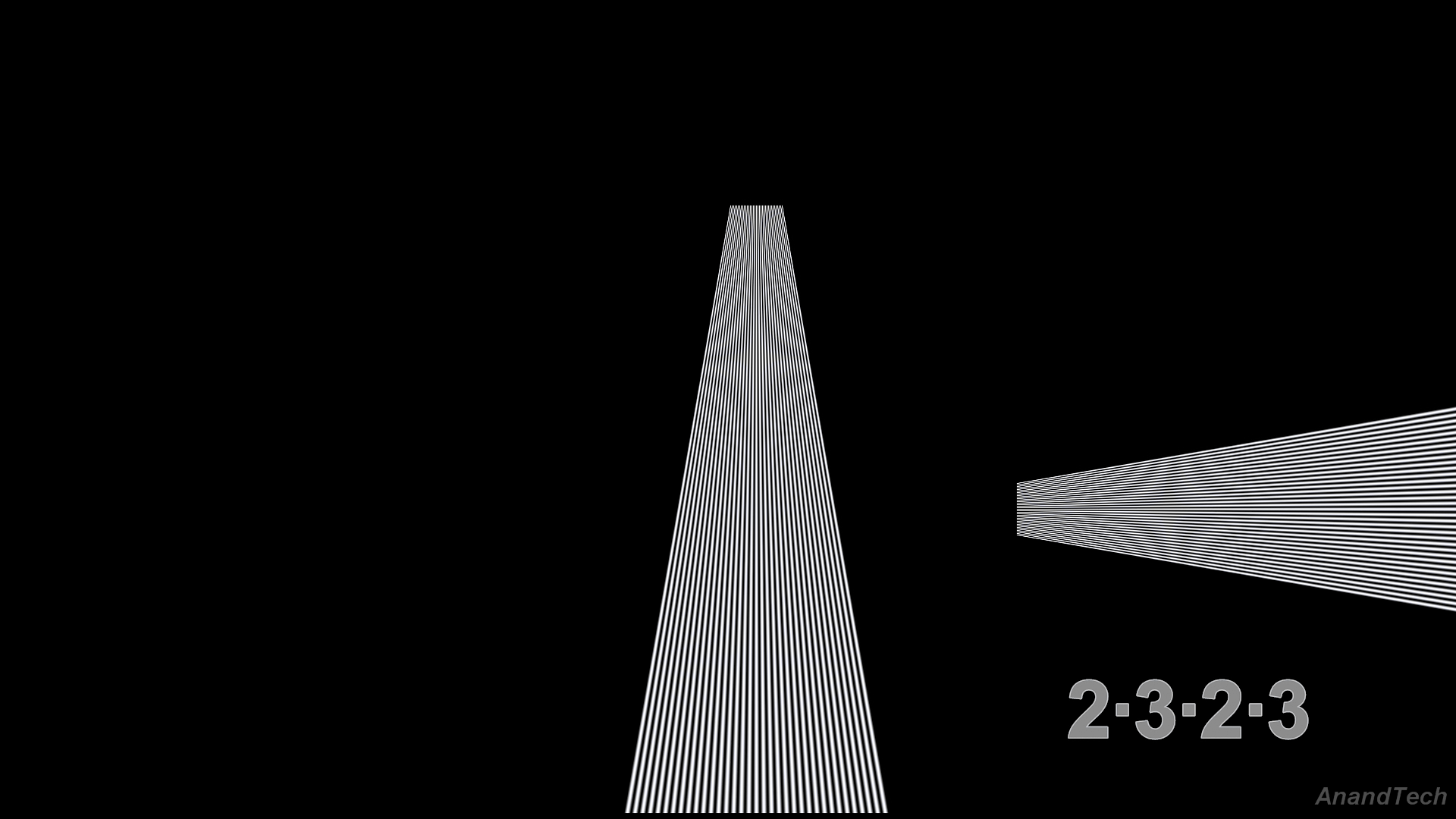
Cadence Locked
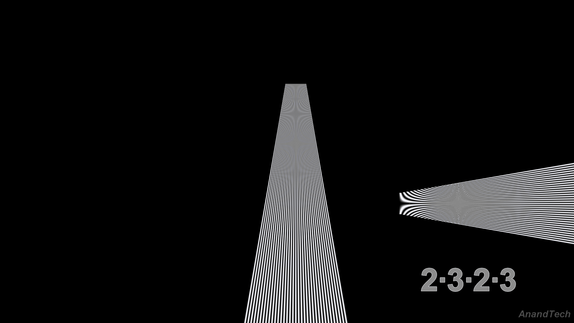
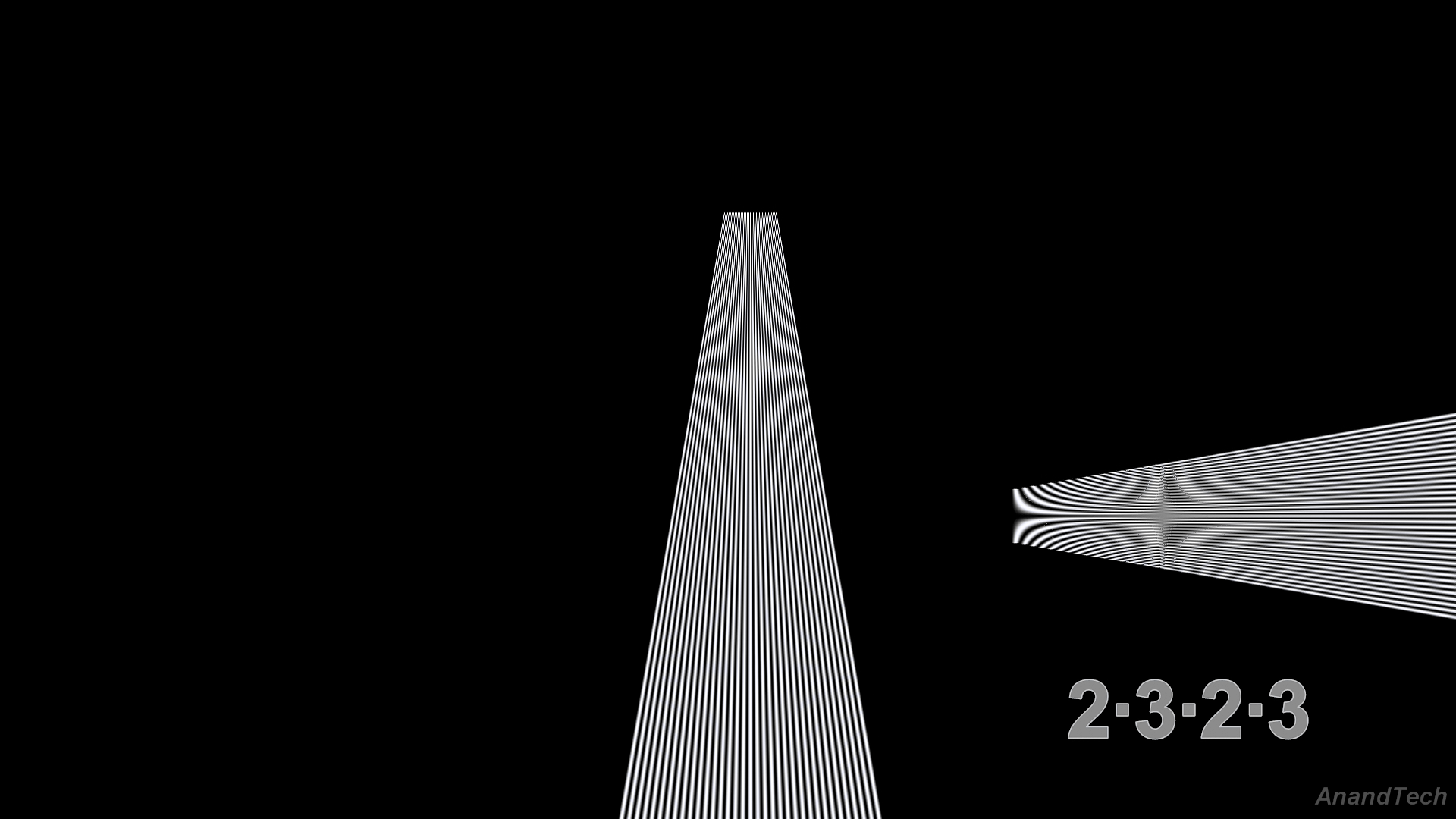
Cadence Lost
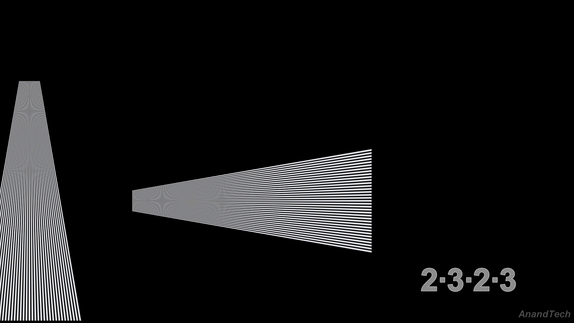

Cadence Regained
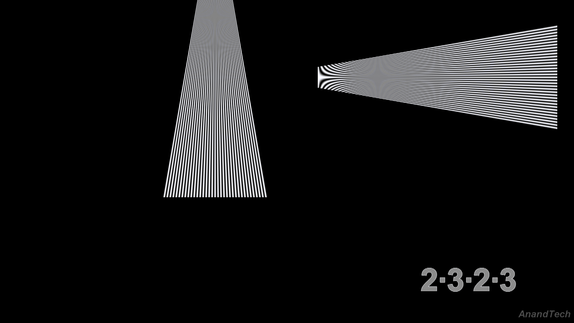
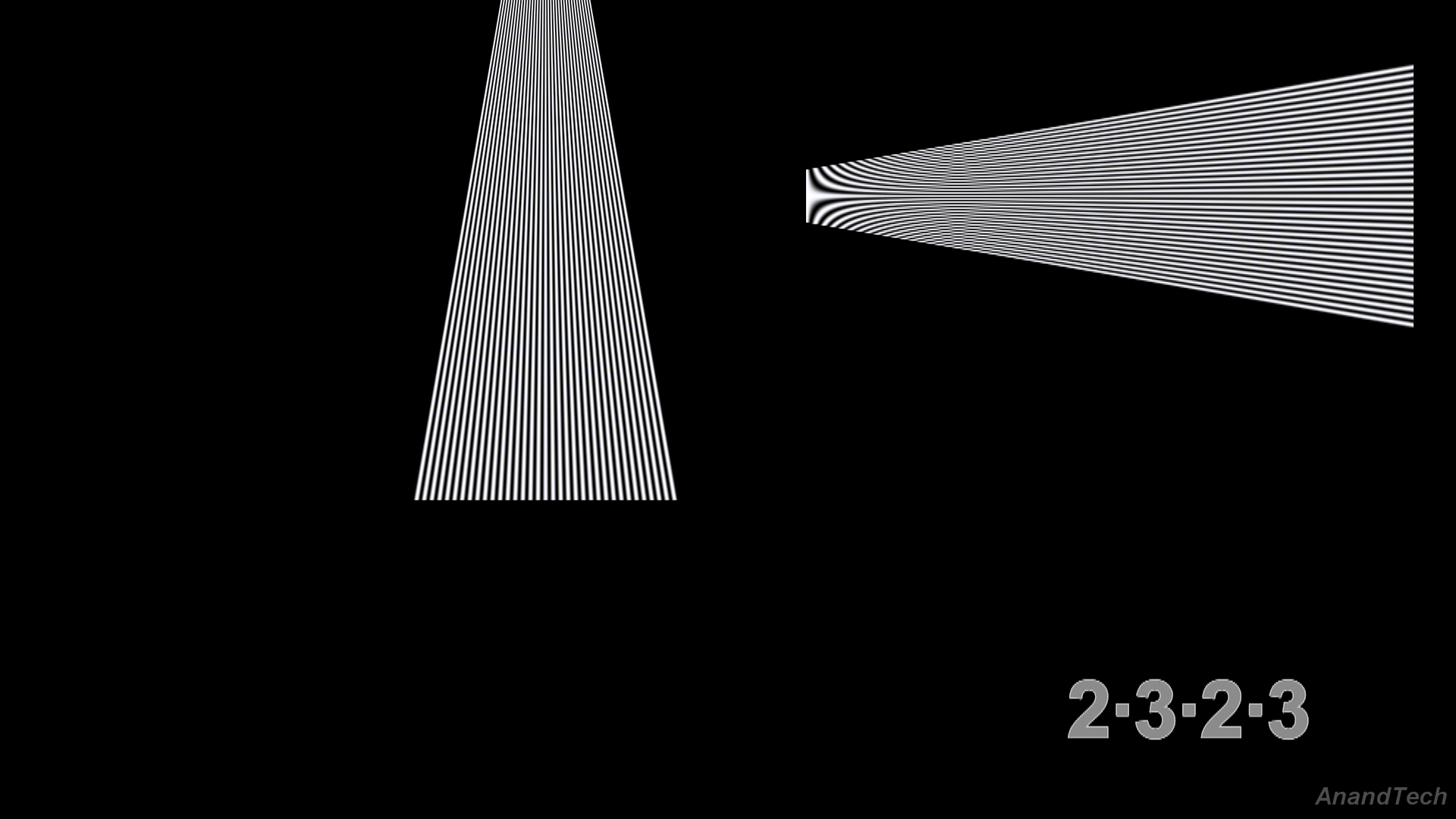
Cadence Permanently Lost
What is the takeaway from this experiment? Cadence detection will probably work for the more common scenarios, but don't be surprised if you encounter some streams which fail.
The more interesting aspect is the deinterlacing quality. Let us take a look at the artificial Cheese Slices first. A sample deinterlaced frame is provided below.
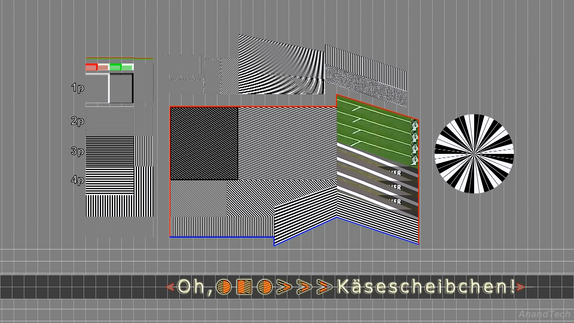
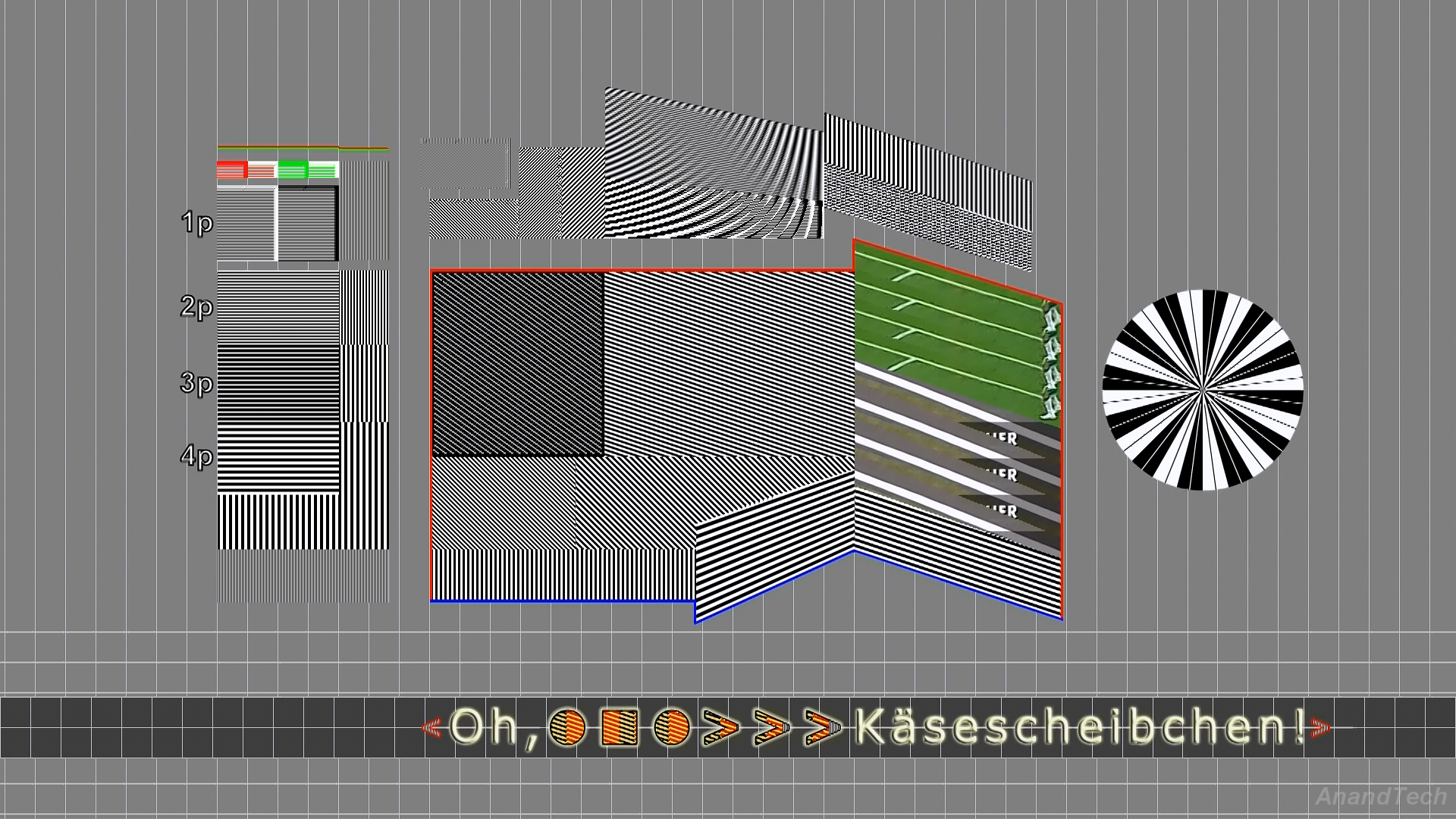
AMD 6550D's Vector Adaptive Deinterlacing
Now, let us compare Intel HD 3000 Graphics and the AMD 3550D with respect to the various deinterlacing aspects.
Deinterlacing - Video Reference:
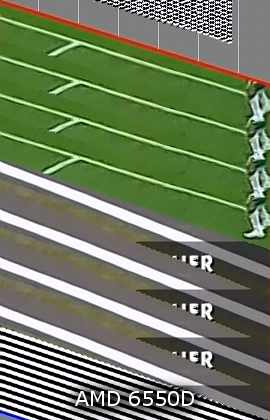
| AMD 6550D | Intel HD3000 |
Deinterlacing - Cheese Slice Ticker:

| AMD 6550D | Intel HD3000 |
Deinterlacing - Noise Response:
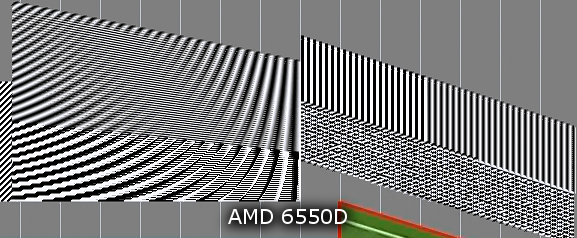
| AMD 6550D | Intel HD3000 |
Deinterlacing - Algorithm Type:
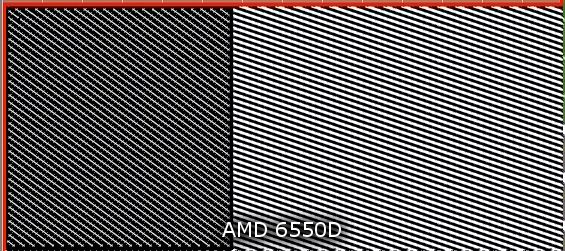
| AMD 6550D | Intel HD3000 |
Deinterlacing - Disc Test:
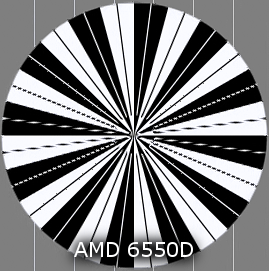
| AMD 6550D | Intel HD3000 |
Except for a certain segment in the noise response section, it looks like the AMD algorithm works much better than Intel's for the Cheese Slices test.
How does edge adaptive deinterlacing work? Here are screenshots made while playing back the boat clip from S&M on the Intel HD 3000 and the AMD 6550D.
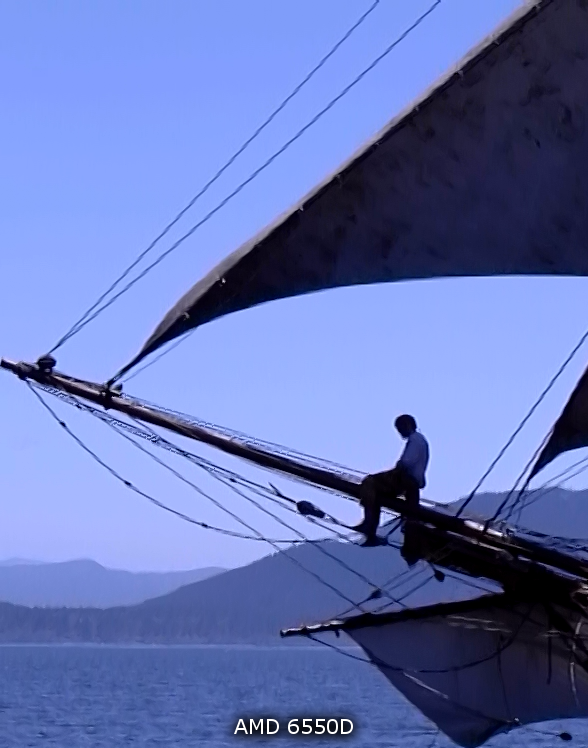
| AMD 6550D | Intel HD3000 |
From a deinterlacing perspective, the AMD 6550D looks better. However, the default video post processing settings with ESVP seem to wash out the details (for example, near the shoreline) when compared to the Intel HD 3000.










104 Comments
View All Comments
Galcobar - Friday, July 1, 2011 - link
Well, if Anandtech is so deeply in Intel's pocket, Intel might want their money back if the corporation were to read all the accusations of bias against Intel SSDs when Anandtech reviews an OCZ drive and concludes it's faster if less reliable.Well, as my journalism profs said, if everyone's angry at you, you're doing your job.
Musafir_86 - Friday, July 1, 2011 - link
Hi Ganesh,-Thanks for the article. As per your reply to me in the preceding article (by Anand), besides video quality, where are the comparison for gaming? Or am I wrong to expect image quality (IQ) comparison for 3D games here?
Thanks again.
ganeshts - Friday, July 1, 2011 - link
I misunderstood your original request for IQ testing. I thought it was for video playback.As for 3D games, I am not the right person since I don't play any games at all (except for running benchmarks). Let me ping a few people in our team and see if we can get that done and posted in a follow-up.
Musafir_86 - Friday, July 1, 2011 - link
-Okay, I will be waiting for it then. :DRegards.
jabber - Saturday, July 2, 2011 - link
A tip re. integrated graphics. All the PCs and laptops I get in with such setups all have The Sims installed.Can we have a Sims benchmark. Just saying as it would actually be a benchmark relevant to folks that actually use such machines.
I dont need to know it will only do 6fps with Crysis. I kinda know that.
mindbomb - Saturday, July 2, 2011 - link
i think the bug you are experiencing is related to the evr cp renderer. If you use an updated build, this should go away.ganeshts - Saturday, July 2, 2011 - link
Yes, I did find that on the MPC-HC IRC channel. But, the difference between BD-ISO and M2TS using TMT itself remains unexplained. The driver does lots of 'invisible' post processing when using EVR, so there is no reason why AMD didn't do that in this case.puretech - Saturday, July 2, 2011 - link
I truly hope that software developers takes the Fusion platform at this CPU performance level seriously. For many years now higher performance CPUs has not been needed by 99.5% of the consumers. It's not even possible anymore to to get the kids of today to understand what actually was possible to do already with a 486 based system 20 years ago, and the major problems even back then were slow disk I/O and poor graphics performance, not the CPU itself. Since then software development has only been for the highest CPU performance leading to sloppy programming and non-existent optimization, forcing people to upgrade the hardware to stay on "contemporary" operating systems. This review says more about the operating system and the application developers than the Fusion platform.ganeshts - Saturday, July 2, 2011 - link
I think the problem is more with the drivers rather than the Fusion GPU itself. But, that said, the drivers are themselves a part of the Fusion platform.Dobs - Saturday, July 9, 2011 - link
Since every other site is finding these hum with more memory & bandwidth, please retest with 8GB of 1866 Ram.And can the default GFX memory of 512 MB be increased to 1024 or 2048? What happens to the benchmarks then?
Thanks
Dobs